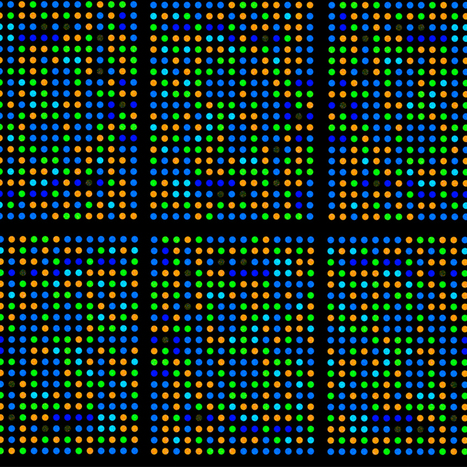The latest in high-density ultra-durable data storage has been perfected over billions of years by nature itself.
Now ‘Smoke on the Water’ is making history again. This September, it was one of the first items from the Memory Of the World archive to be stored in the form of DNA and then played back with 100% accuracy. The project was a joint effort between the University of Washington, Microsoft and Twist Bioscience, a San Francisco-based DNA manufacturing company.
The demonstration was billed as a ‘proof of principle’ – which is shorthand for successful but too expensive to be practical. At least for now.
Many pundits predict it’s just a matter of time till DNA pips magnetic tape as the ultimate way to store data. It’s compact, efficient and resilient. After all, it has been tweaked over billions of years into the perfect repository for genetic information. It will never become obsolete, because as long as there is life on Earth, we will be interested in decoding DNA. “Nature has optimised the format,” says Twist Bioscience’s chief technology officer Bill Peck.
Players like Microsoft, IBM and Intel are showing signs of interest. In April, they joined other industry, academic and government experts at an invitation-only workshop (cosponsored by the U.S. Intelligence Advanced Research Projects Activity (IARPA)) to discuss the practical potential for DNA to solve humanity’s looming data storage crisis.
It’s a big problem that’s getting bigger by the minute. According to a 2016 IBM Marketing Cloud report, 90% of the data that exists today was created in just the past two years. Every day, we generate another 2.5 quintillion (2.5 × 1018) bytes of information. It pours in from high definition video and photos, Big Data from particle physics, genomic sequencing, space probes, satellites, and remote sensing; from think tanks, covert surveillance operations, and Internet tracking algorithms. EVERY DAY, WE GENERATE ANOTHER 2.5 QUINTILLION BYTES OF INFORMATION.
Right now all those bits and bytes flow into gigantic server farms, onto spinning hard drives or reels of state-of-the-art magnetic tape. These physical substrates occupy a lot of space. Compare this to DNA. The entire human genome, a code of three billion DNA base pairs, or in data speak, 3,000 megabytes, fits into a package that is invisible to the naked eye – the cell’s nucleus. A gram of DNA — the size of a drop of water on your fingertip — can store at least the equivalent of 233 computer hard drives weighing more than 150 kilograms. To store the all the genetic information in a human body — 150 zettabytes — on tape or hard drives, you’d need a facility covering thousands, if not millions of square feet.
And then there’s durability. Of the current storage contenders, magnetic tape has the best lifespan, at about 10-20 years. Hard drives, CDs, DVDs and flash drives are less reliable, often failing within five to ten years. DNA has proven that it can survive thousands of years unscathed. In 2013, for example, the genome of an early horse relative was reconstructed from DNA from a 700,000-year-old bone fragment found in the Alaskan permafrost.
Via Integrated DNA Technologies, Dr. Stefan Gruenwald, Miloš Bajčetić



 Your new post is loading...
Your new post is loading...







